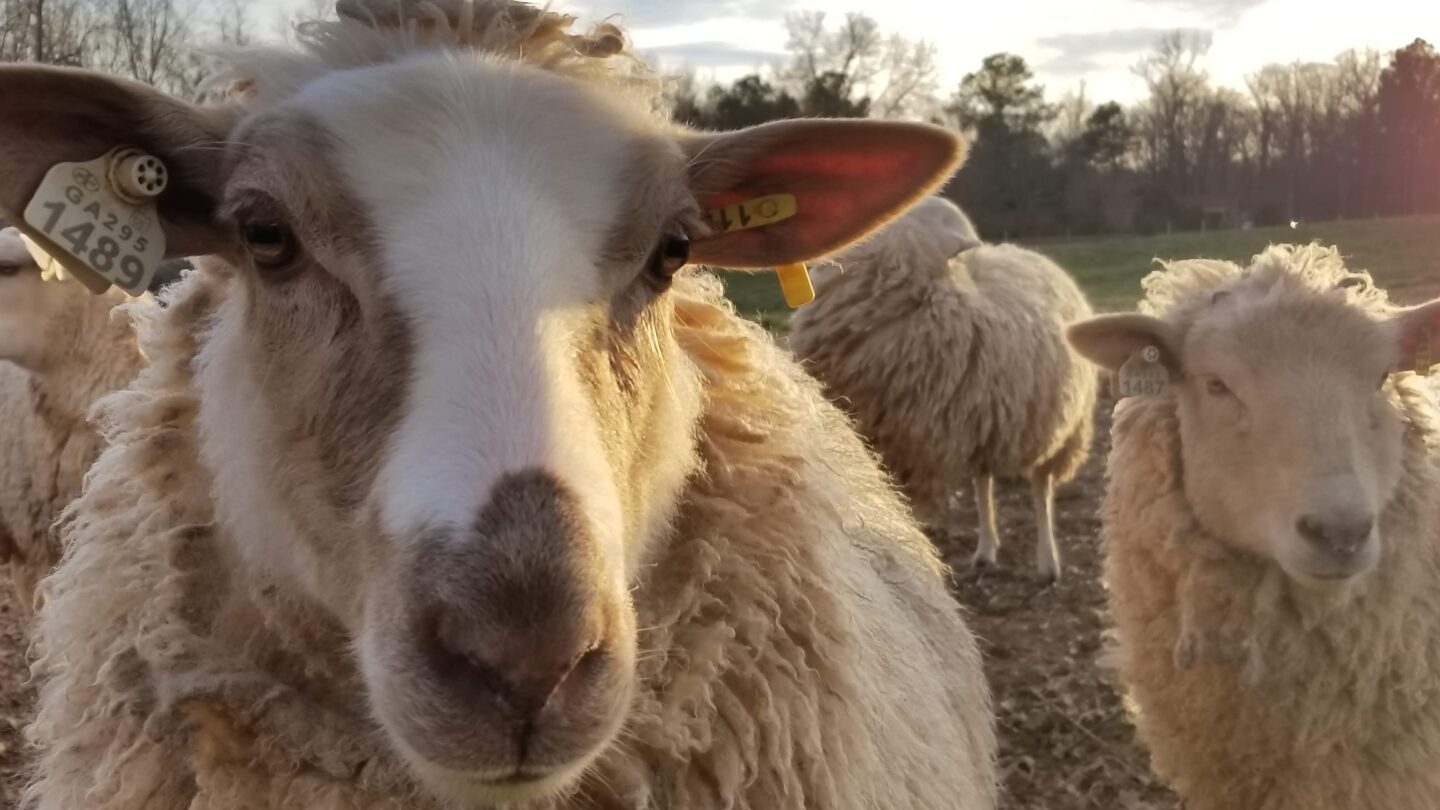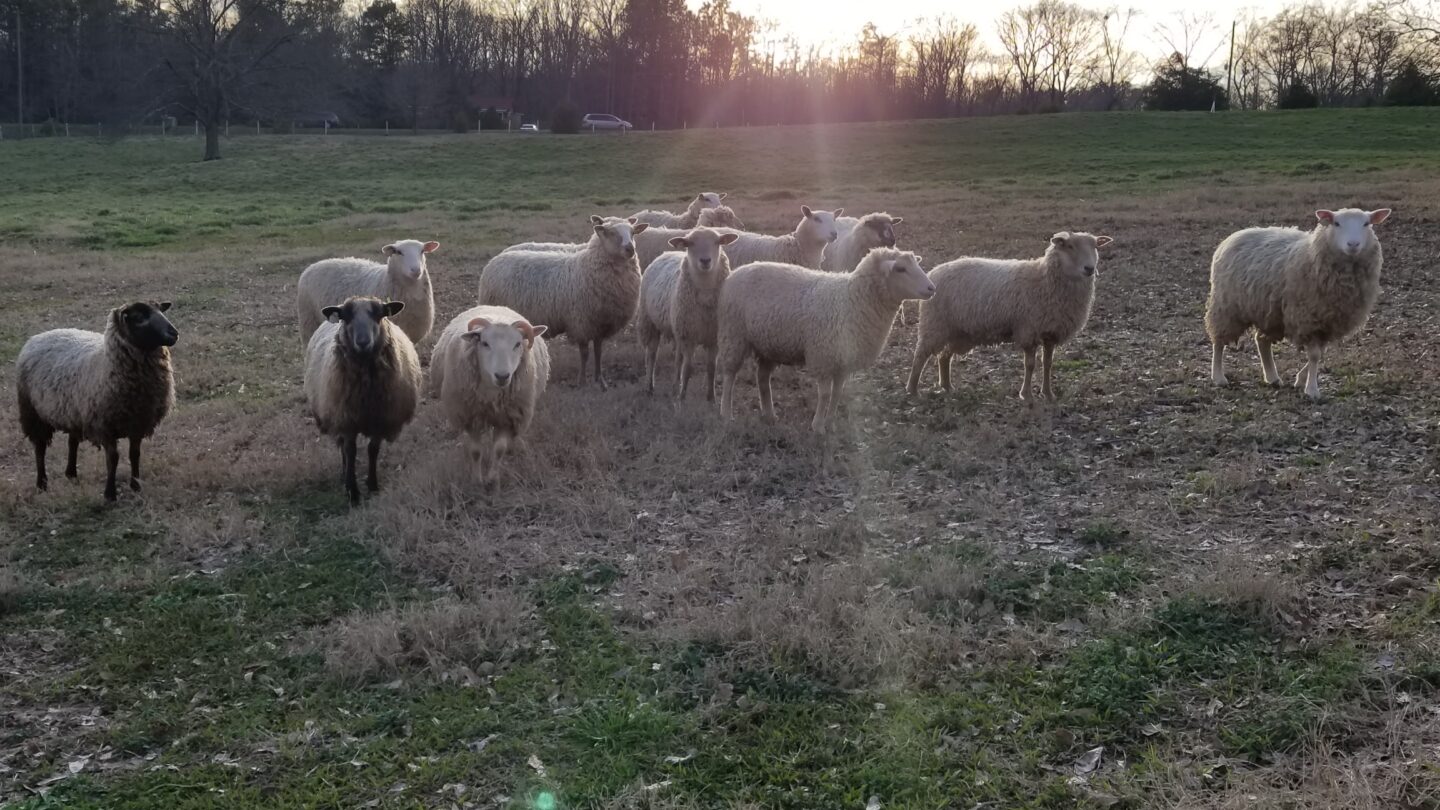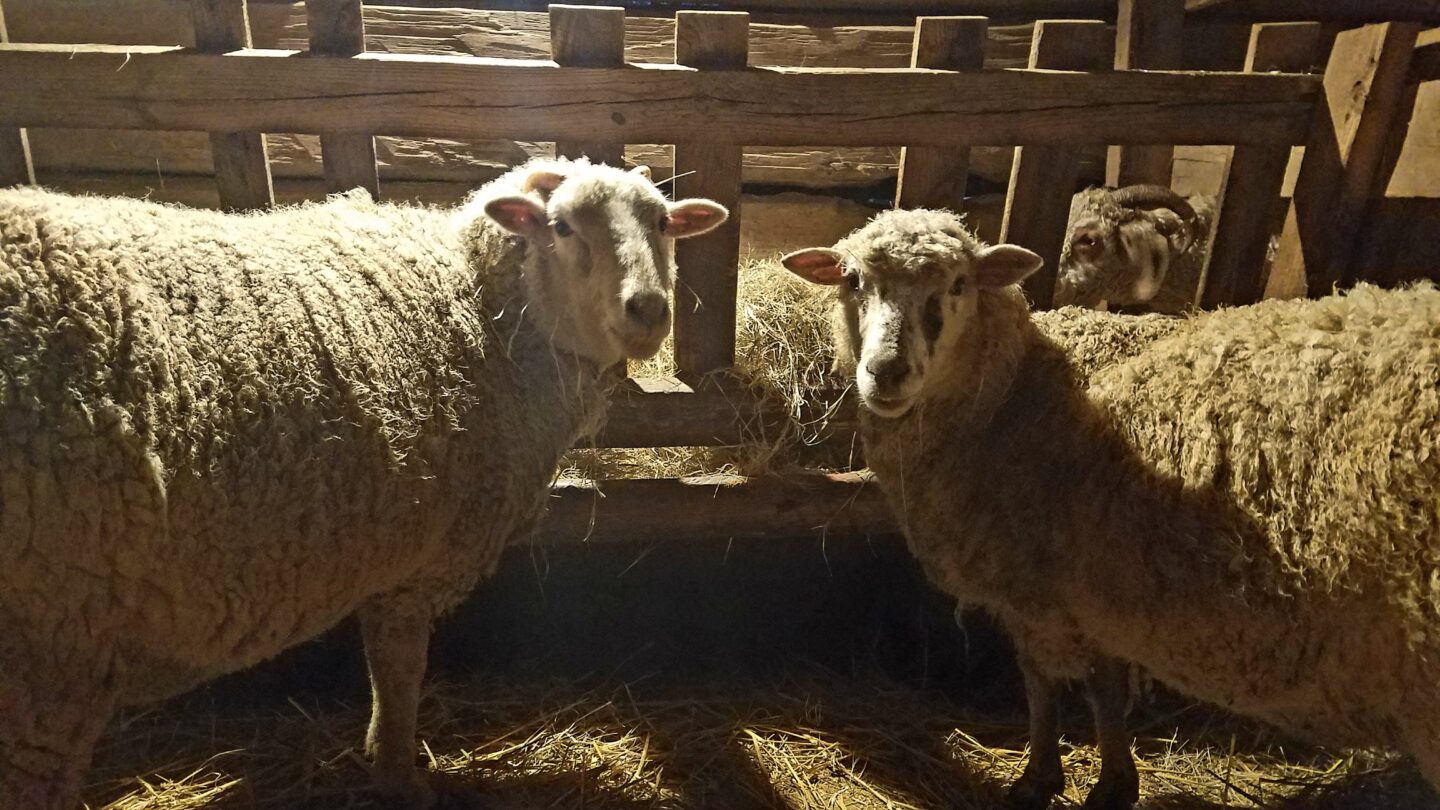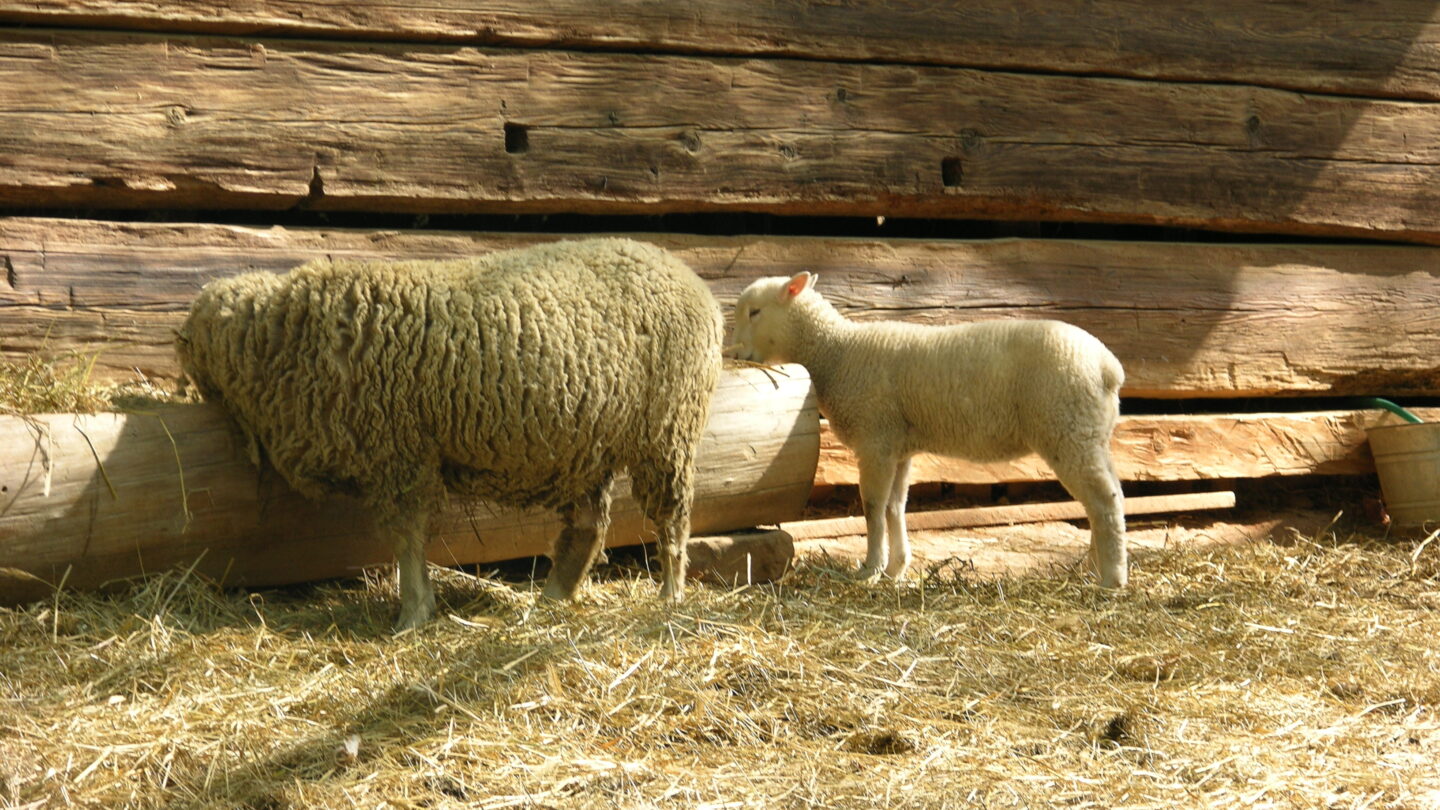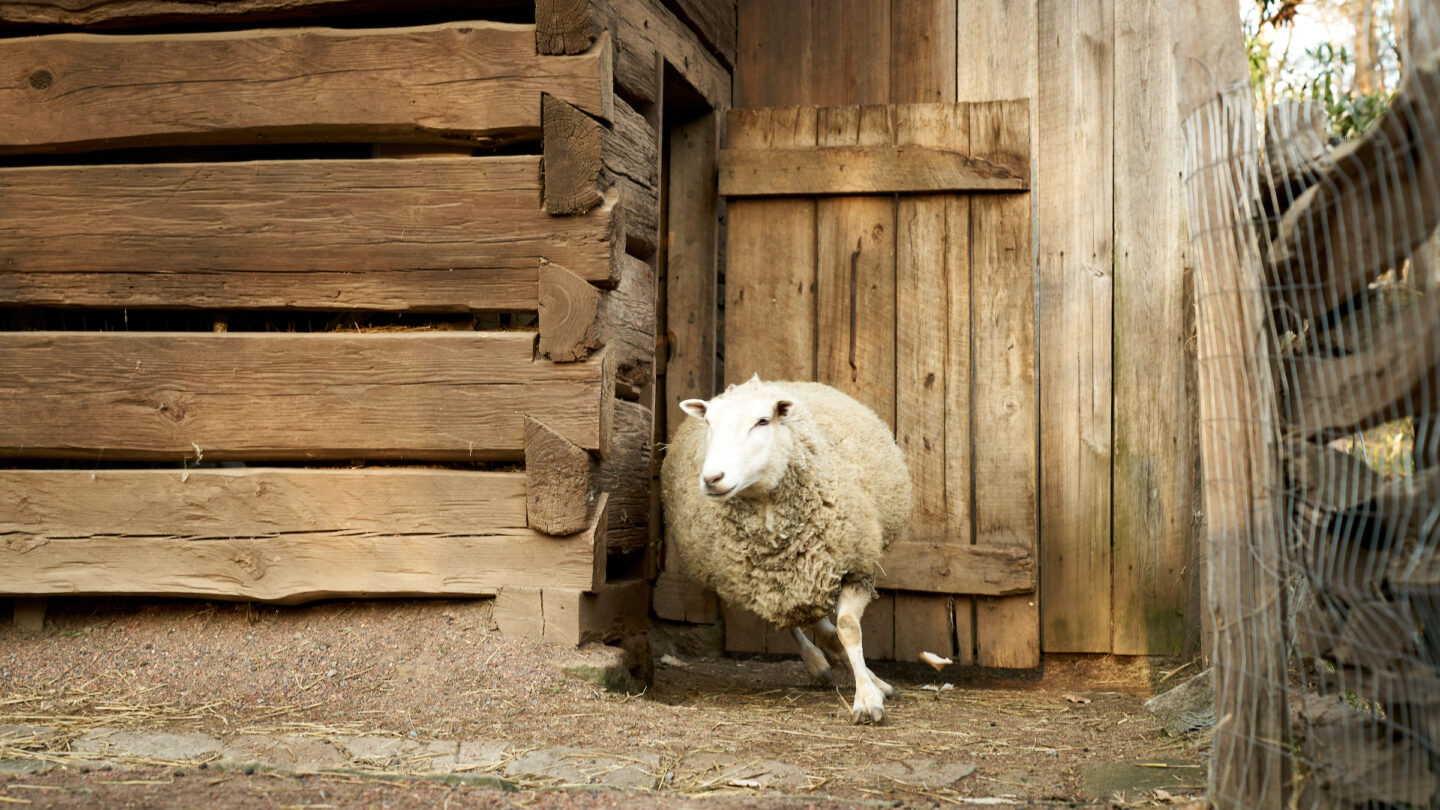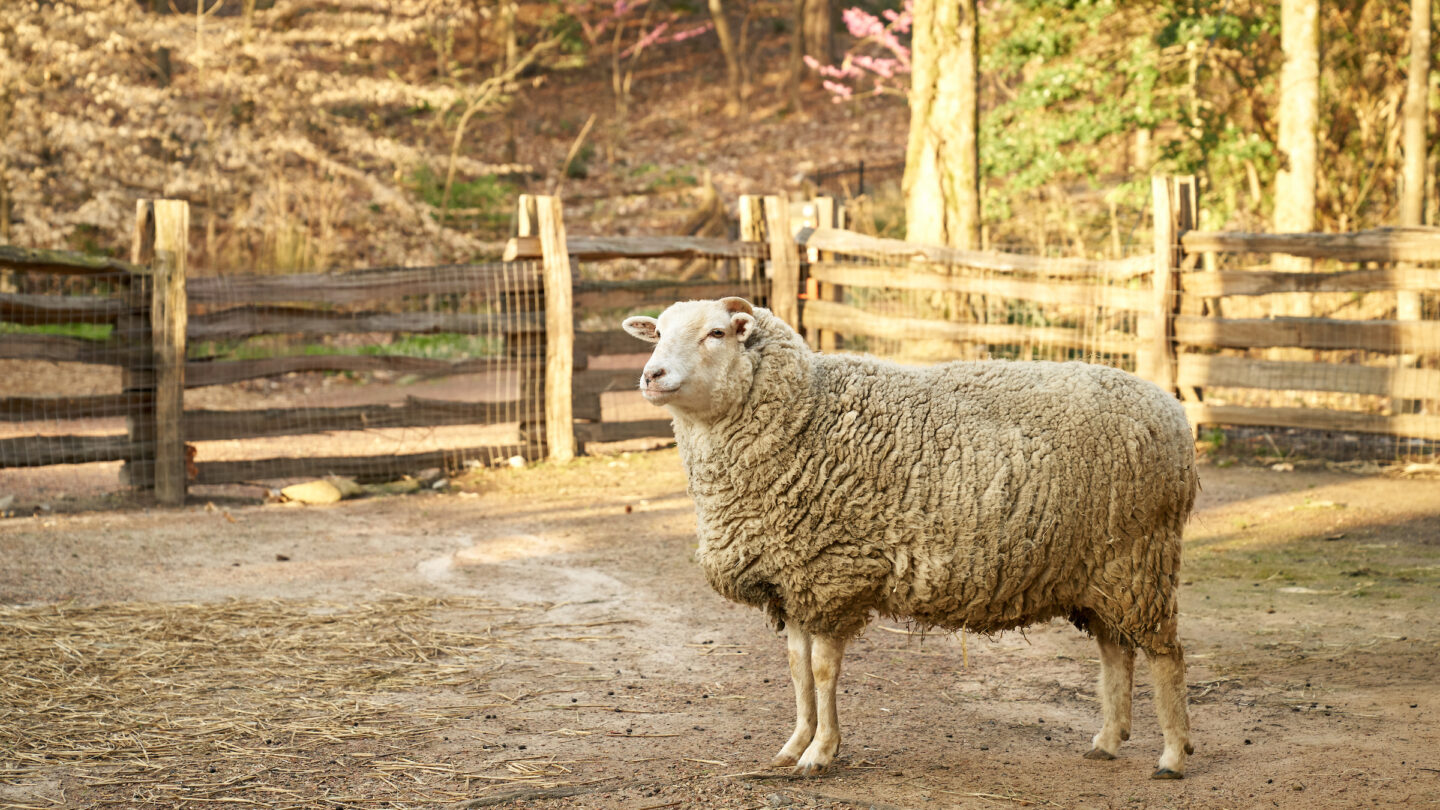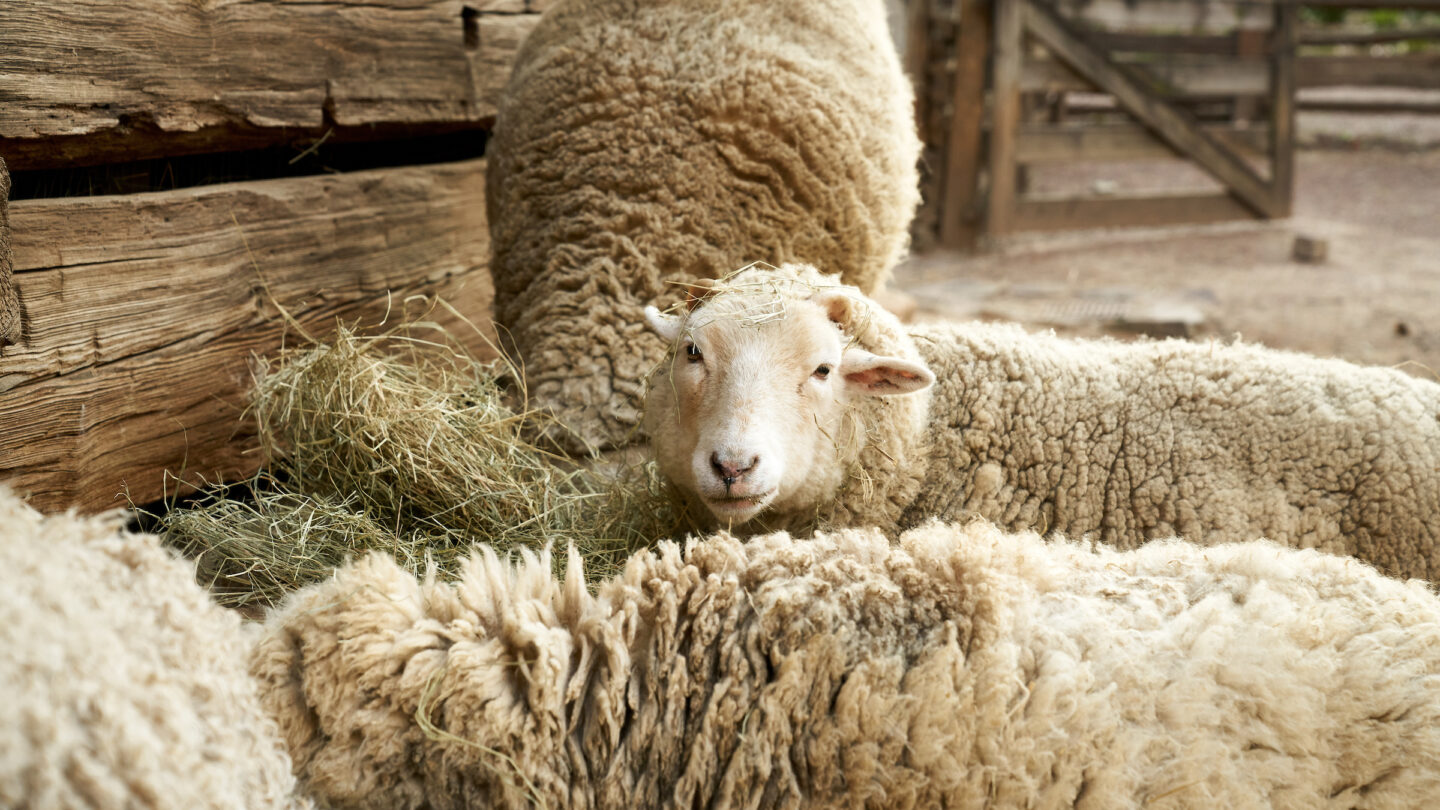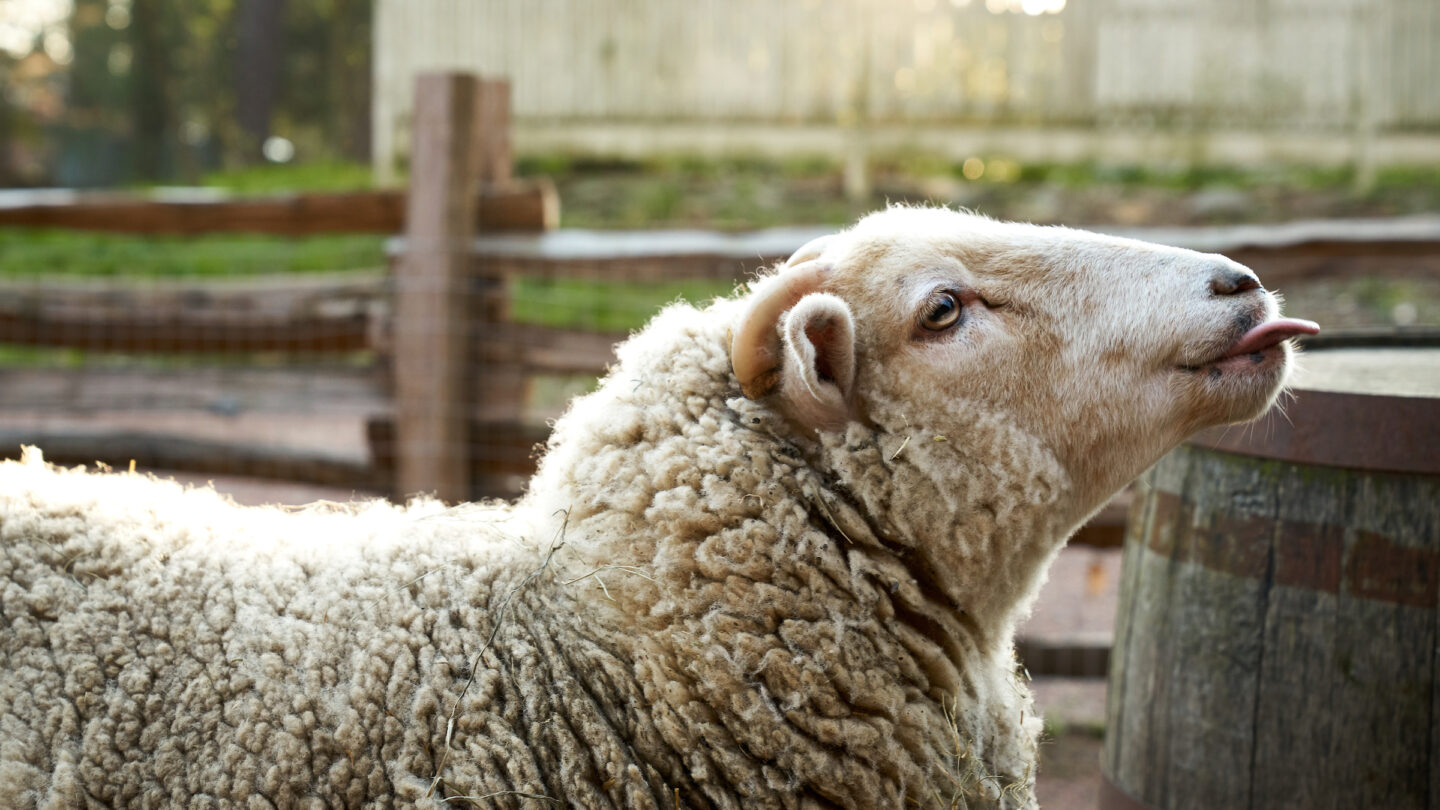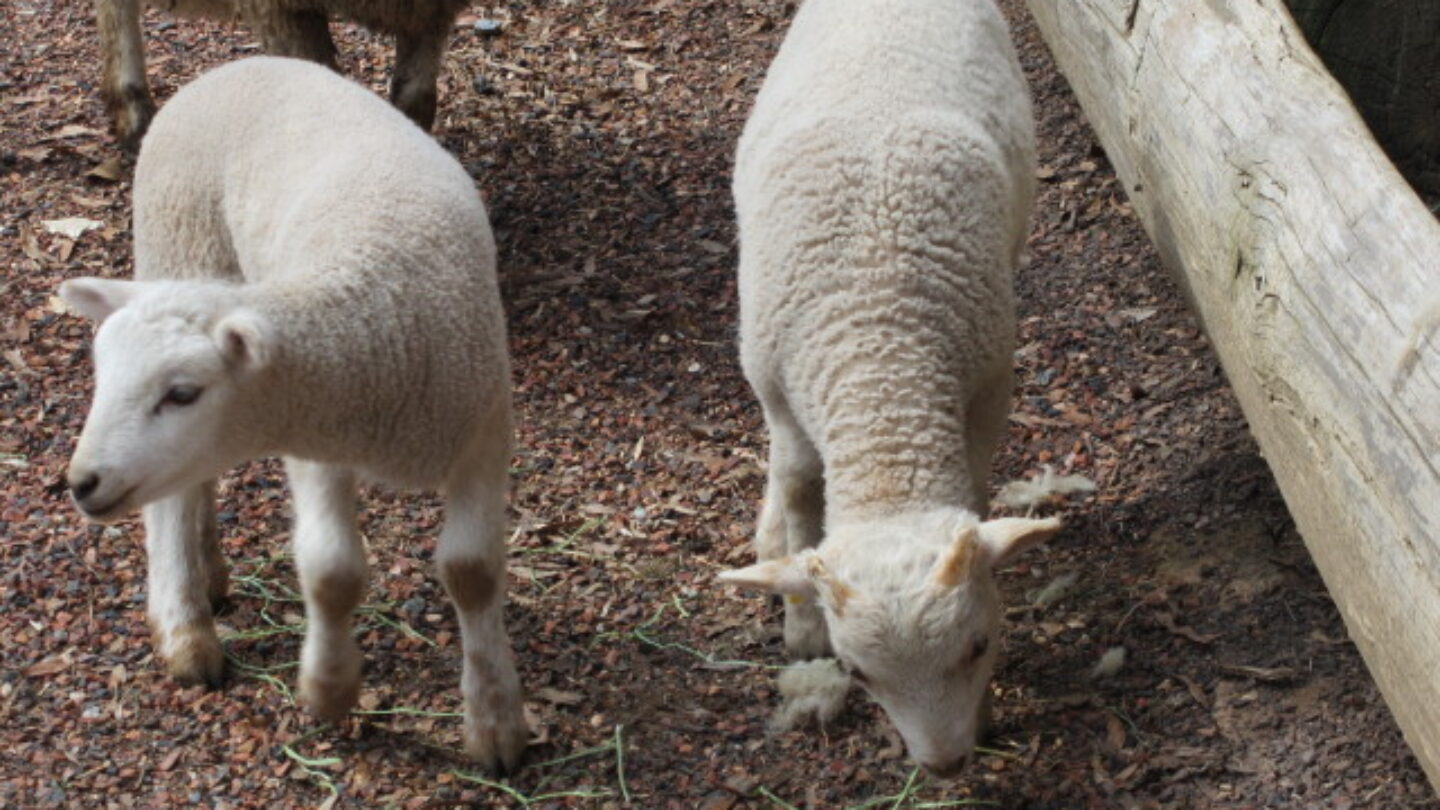
How swiftly does a decade pass! On February 20, 2013, I was busy cleaning out the barn at the Smith Farm in preparation for the much-anticipated return of live animals. I had only worked at Atlanta History Center for a week when the farm manager came to find me and uttered two words: “Road trip!” We were going to drive to a farm near Athens, Georgia, to look at sheep and select four to come and live with us.
When we arrived, the shepherd took us to look at her beautiful flock of Gulf Coast sheep. Most of her lambs are born in January or early February, so all the ewes of breeding age had little ones accompanying them. The shepherd called our attention to a couple of seven-year-old ewes, both of which had a male lamb.
Were we interested in taking these four, the mothers and their offspring?
One of the mothers was a skinny, hornless ewe with a yellow plastic tag in her left ear that bore the number 64. She was very inquisitive, trotting right up to us with engaging friendliness. She had a lamb with her that had been born on February 7, less than two weeks earlier. Like his mother, he had no horns. His plastic ID tag was in his right ear—it is the custom to tag sheep in the right ear if they are male and the left if they are female.
The other mother was much more reserved, keeping her distance. She had as distinctive a face as I’ve ever seen on a sheep, with a black patch in front of her left eye and a generous sprinkling of black and tan spots running the length of her snout. Also, unlike the other ewe, she had tiny horns, but the wool on her crown was so thick these weren’t immediately apparent. She bore ear tag number 054 and was closely followed by a slightly older lamb—his birthdate was January 25, and he already had tiny horns like his mother. I chuckled thinking how so many people think if a sheep has horns, then it’s a male, and if not, then it’s a female, and how if we took these four, we’d be able to show that presence or absence of horns is not a reliable way of determining a sheep’s gender.
And take them we did, requesting their arrival in two weeks to their new home at Atlanta History Center. On the drive back, we agreed that while all lambs are cute, these two 2013 young ones we had selected were especially endearing. What would we name them? Once they came to the history center, their mothers would also require names, not numbers.
We named the inquisitive one Dana and the reserved one with the patch on her face Ida Mae. Dana’s little lamb became Buster; Ida Mae’s lamb got the name Hercules. And the tags came out of all their ears. We didn’t need those numbers to tell our four distinctive sheep apart, and anyway, plastic ear tags look a bit out of place at a nineteenth-century farm.
Buster and Hercules continue to delight visitors and staff as they approach their tenth birthdays.
Dana and Ida Mae lived normal sheep lifespans and are no longer with us. Buster and Hercules inherited the characteristics of their mothers, with Buster the more outgoing of the two. Once a new human face becomes familiar to Hercules, he, like Buster, is eager to approach the fence, encouraging his new friend to pet him.
Buster and Hercules both enjoy going for walks, and you may see me taking Buster for a stroll between 2 and 3 in the afternoon on Saturdays. Hercules prefers I walk him early in the morning before any visitors arrive. Sometimes in the quiet moments just after dawn, I’ll put the halter over his head, and together, we will trot around the Smith Farm—a gentle sheep and a man blessed with the good fortune to enrich the lives of his animals as they have given years of joy to his.

